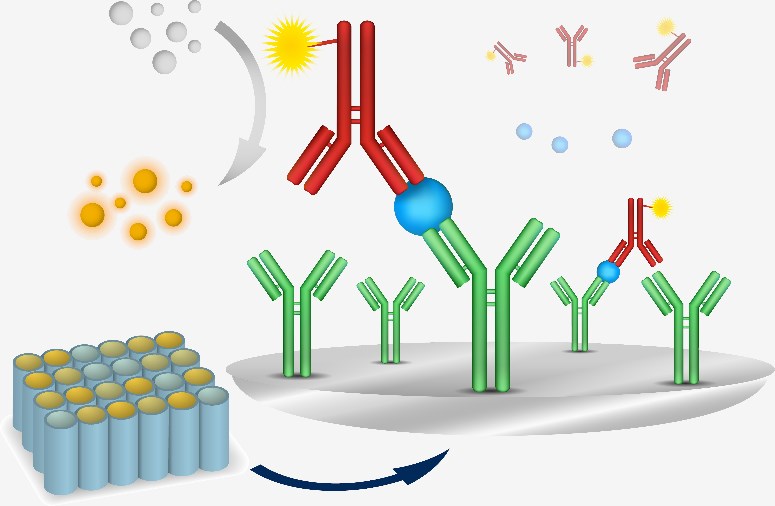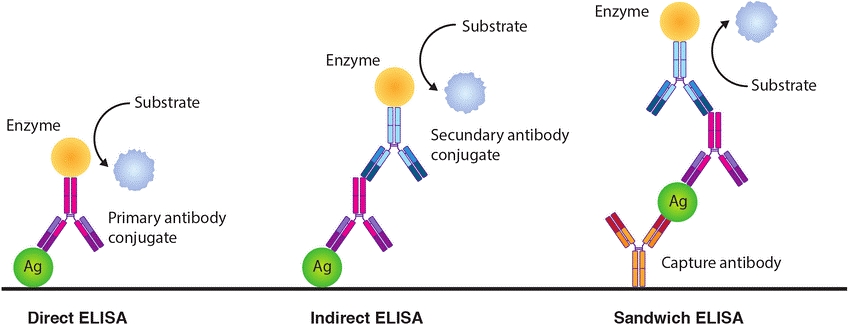Support
Methods of quantitative measurement that show antigen-antibody reactions through the color change obtained by using an enzyme-linked conjugate and enzyme-substrate and that serve to identify the level of concentration of molecules in biological fluids are generally called Enzyme-Linked Immunosorbent Assay (ELISA). Due to its high sensitivity, low concentration biomarkers such as proteins, hormones, vitamins, and drugs display a high level of specificity against antibodies or antigens developed for them. Since developed to detect the serum IgG quantificationally in 1971, ELISA occupied an important position in various fields of biotechnology rapidly. As an advanced biotech company, Creative Biolabs established comprehensive and one-stop ELISA platforms to accelerate your research. Based on our rich experience and skilled groups, we are able to promise the best services to our clients all over the world.
Introduction of ELISA
ELISA was developed from radioimmunoassay by replacing the enzymes instead of radioisotopes and this new method was applied firstly to determine the levels of IgG in rabbit serum. The initial step of ELISA is utilizing antigens to a solid phase which should be able to appropriately adsorb the specific antigen and the antibody. The enzymes that can be employed in ELISA include beta-galactosidase, glucose oxidase, peroxidase, and alkaline phosphatase, all of which can catalyze specific substrate discoloration.
 Fig.1 Workflow of ELISA.
Fig.1 Workflow of ELISA.
As an alternative to radioimmunoassay methods, ELISA has distinct advantages such as the long lifespan of the reagents used, being free of radiation risks associated with waste substances, enabling the analyses of multiple samples in a short time period in diagnosis and research laboratories, and low cost. Nowadays, ELISA is generally accepted as one of the most important technologies in biological research.
Application of ELISA
After the invention in 1971, ELISA was widely applied in a number of researches in immunology, protein engineering, disease diagnosis, microbiology, and so on. Since the properties of the substances to test are not always similar, a variety of ELISA types have been used to increase the sensitivity and specificity. Typically, ELISA was divided into four categories: direct ELISA, indirect ELISA, sandwich ELISA, and competitive ELISA. Although direct ELISA pioneered other ELISA types, it is rarely applied due to its low sensitivity. While indirect ELISA is usually utilized to identify antigens, sandwich ELISA is more common in antibody screening.
Nowadays, ELISA is widely used around the world for the purposes of hepatitis screening, measuring tumor markers, determining hormone quantities, and many other fields. Moreover, there are more than 100 kinds of commercial ELISA kits all over the world, which also suggests the huge application potential. Recently, with the spread of COVID-19 around the world, numerous advanced high throughput detection methods based on ELISA combined with microfluidic technology appear and contribute to the fight against the epidemic.
 Fig.2 ELISA assays comparison. (Salazar, 2017)
Fig.2 ELISA assays comparison. (Salazar, 2017)
As an indispensable method for medical and research laboratories, ELISA has occupied a position in the history of biology. Therefore, Creative Biolabs provides commercial or customized ELISA-related services and products to promote your progress. For more details, please feel free to contact us.
Reference:
- Salazar, A.; et al. Allergen-Based Diagnostic: Novel and Old Methodologies with New Approaches. Allergen. 2017: 77.

